In the landscape design many plants are used, however, in the special account of the designers were single species of shrubs, among which Japanese spiraea.
This species belongs to summer-bearing. Plants perfectly tolerate a figured haircut, are easily rejuvenated, have a wide range of applications. They are planted in hedges and curbs, single and group plantings.
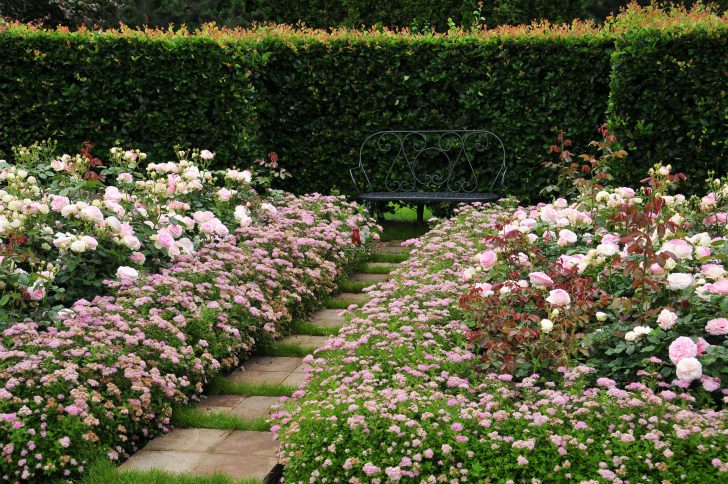
Japanese spiraea is perfect for decorating curbs
What is especially valuable – this long and incredibly abundant flowering shrubs are not afraid of our harsh winters. They do not have to be constantly dug and transplanted. Plants are no less resistant to hot days, they do not care about the gassiness of city air, diseases are not terrible.
Spirea is durable. With proper care can live up to 40 years. Add here the fact that the bush is still a good honeycomb, and you will understand that in the zone of risky agriculture such qualities, with great ornamentality, have very few types of shrubs.
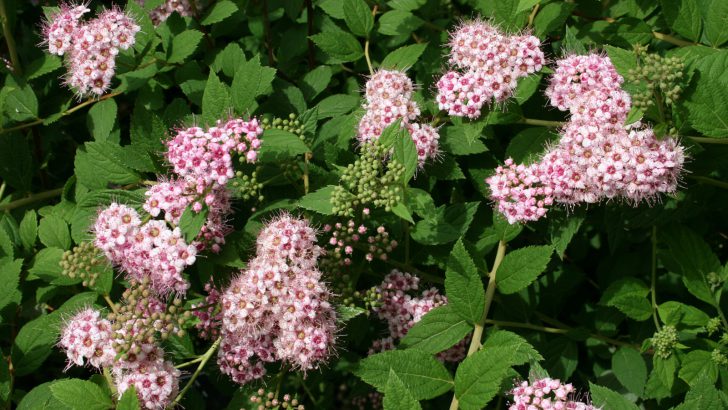
Japanese spirea refers to durable plants
The height of the Japanese spirea, however, like the shape of the crown, is very diverse. In the varietal list, you can see ten-centimeter umbrella dwarfs, and creeping forms, and two-meter giants with upright branches. A gently pink, white-white or rich raspberry flowering of spirea bushes (depending on species) lasts from early May to late autumn. There are species that can bloom repeatedly, which makes them a priority when creating garden compositions.
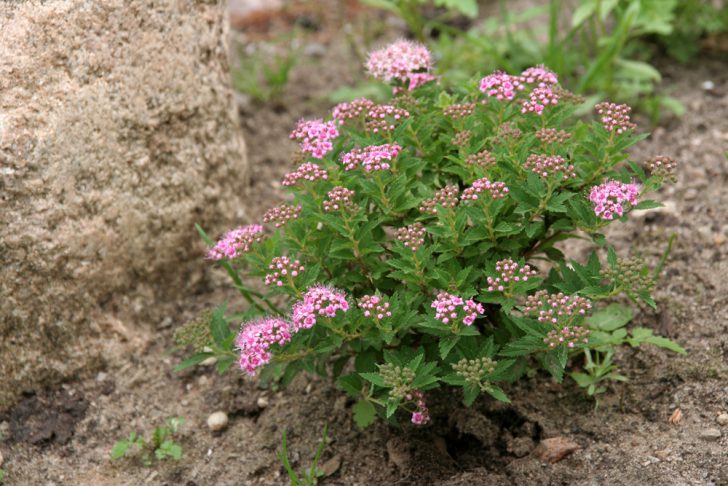
Japanese pygmy spirea
The leaves of the plant differ not only in form, but also in texture. Their color changes with time, but the bushes do not lose their attractiveness. They look especially beautiful in the early spring and in the autumn period. Since spiraea are good both in flowering and in ordinary condition, they are usually decorated:
1. Japanese gardens.
2. Rocky slides.
3. Flower beds.
4. Mixboarders.
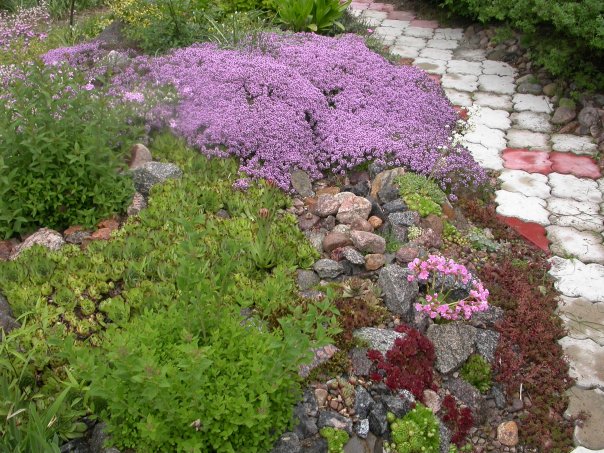
Decoration of the Alpine hill with Japanese spirea
Spiraeans are self-sufficient, so they can be used not only in group plantings and in the creation of fringes under trees, but also as independent decorative elements of the landscape landscape.
Japanese spiraea: species diversity
Golden Princess
Dwarfish appearance. The height of the bush does not exceed half a meter. The Golden Princess has beautiful yellowish-pointed leaves and delicate pink inflorescence petals. The leaves are characterized by a seasonal color change, but their shade always remains soft and pleasant to the eye.
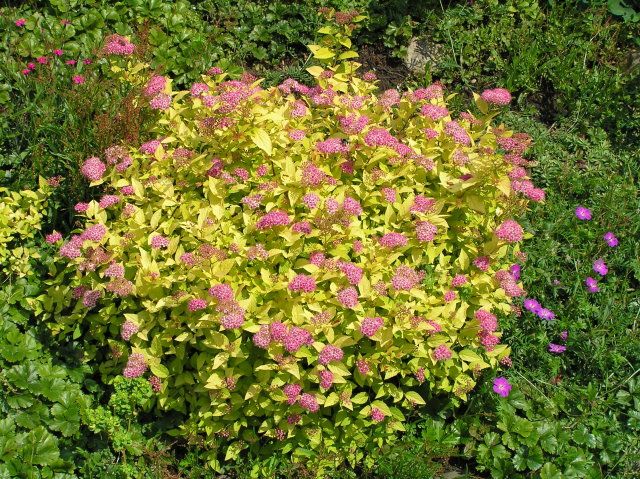
Japanese style spirea Golden Princess
Little princess
The appearance of this species of Japanese spiraea fully corresponds to the name. The height of the bushes is up to 0.8 meters. The crown is compact, has a rounded configuration. During the flowering period the plant is covered with lovely pink flowers. The leaves of ellipsoid form have a dark green color. From Little Princes, you get magnificent hedges. This type of Japanese spiraea is considered the most decorative. Even when planted separately, it will not go unnoticed. It is written on the family to be the highlight of any landscape composition, and it does not matter in what capacity the species will be present there.

Spirea Japanese variety Little Princess
Goldflame
This is the fastest growing variety of Japanese spiraea. Shrubs are powerful, reaching a meter high. In spring the plant is covered with bright orange-red foliage. Throughout the season, the shade of the crown changes, becoming bright yellow during the flowering period and changing to copper-orange in the fall. Gold Flame perfectly feels in urban conditions, so it can often be found in parks.

Bright spirits of Japanese goldflame
Crispa
Elegant and incredibly beautiful plant. Low-grown shrubs have a globular crown, formed from wavy serrated leaves, and are distinguished by a pinkish-lilac shade of flower petals. Crisp is good in curbs and on the slopes of rock gardens.
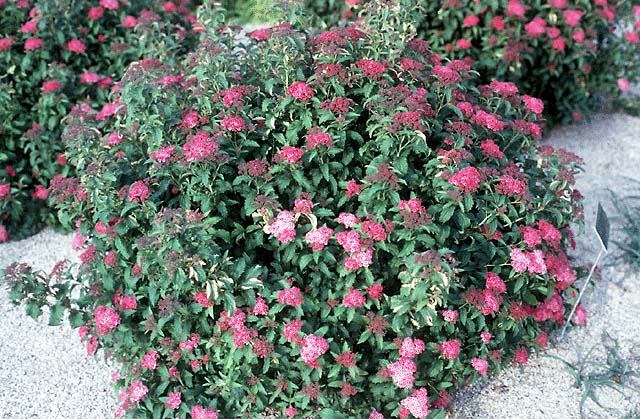
Type spiraea Japanese Crispa globular shape
Shirobana Spiraea
This species is also called a chameleon plant. The reason for this is a wide color range of ejected inflorescences. At the same time buds can be blossomed on the bush from light pink to rich red. Spiraea Shirobana belongs to the group of medium-sized. The height of its bushes is about 80 centimeters.
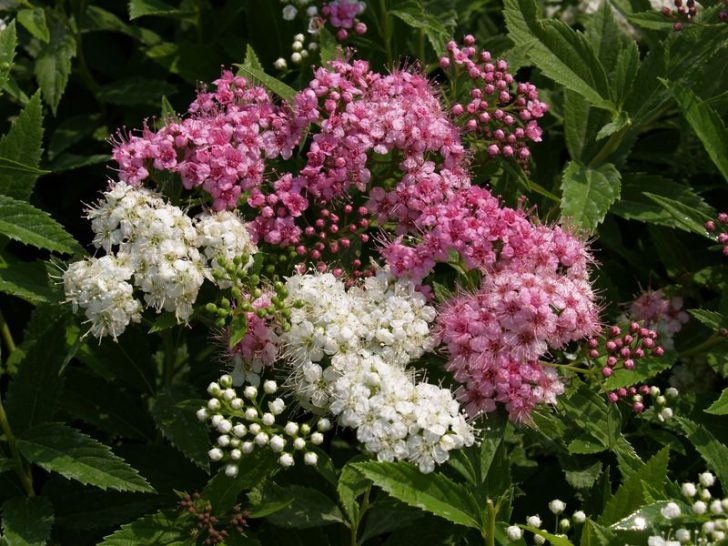
Spiraea Japanese “Shirobana”
How to plant a Japanese spiraea
“Spiraea is an indiscriminate plant”
Since spirea – a bush blossoming, then the place for its vital activity should be sufficiently illuminated. If there are no such open areas, then the plant can be planted in the penumbra of the trees. There she will also feel quite comfortable. Fertility of the soil does not matter, and this fact makes the plant a universal material in the case of gardening. Planting spiraea, you need to consider the varietal characteristics of plants.
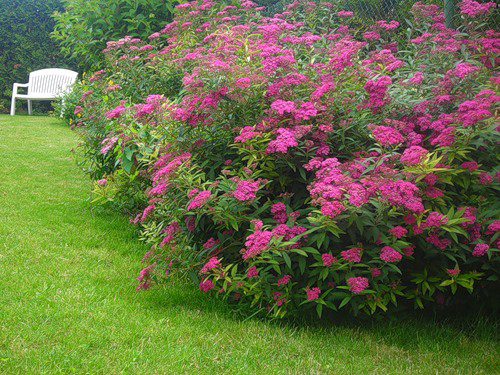
It is recommended to plant Japanese spire on well-lit areas
For example, dwarf species prefer stony soils, so they will be comfortable in rock gardens.

Dwarf spirea will be a good decoration for the rock garden
Spirea is an indiscriminate plant. It easily takes root in any conditions. The bushes are planted in the spring-autumn period, preferably in rainy weather or at least on a cloudy day. On the site of future growth dig a hole, the size of which should be proportional to the size of the roots. If the site has at least a small layer of fertile soil, then fertilizers can not be added. Provided that it is necessary to plant a group of saplings at once to dig holes, it is worth taking a garden drill. Shrubs planted as hedges must be staggered.
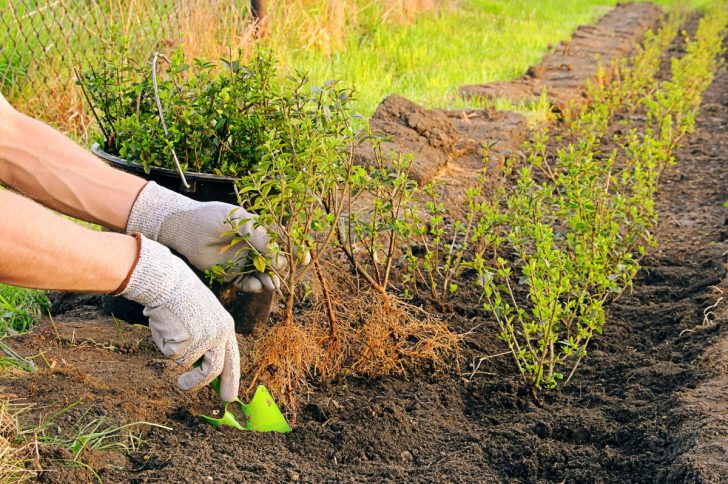
Disembarkation of Japanese spiraea into the ground
The step distance in a row is up to half a meter, the gap between the rows makes from half a meter to seventy centimeters. High plants with a spreading crown can be planted with a meter interval.
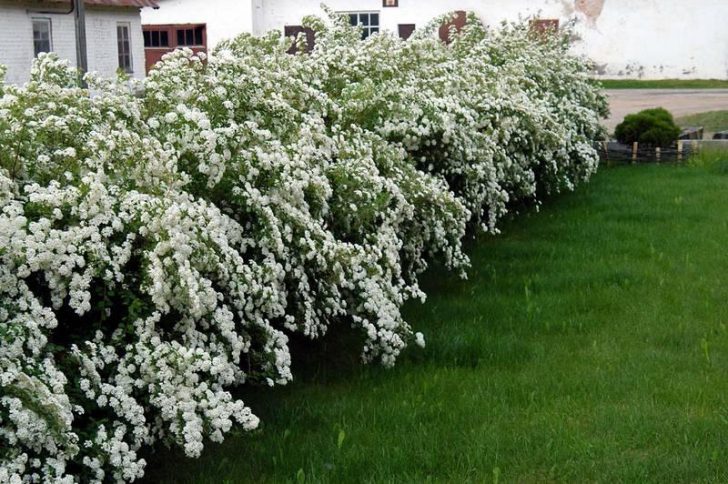
Japanese spirea has a broad sprawling crown
If the pits are located in the lowland, they need to equip drainage. The drainage cushion can be used:
1. Broken brick.
2. Sand.
3. Crushed stone.
The landing pit must have strictly vertical walls. Approximate depth and width parameters are 40 by 50cm. The prepared well is left to be ventilated for several days. Immediately before planting the bush in the pit, a little nutritious soil mixture is placed on the drainage layer, which should include:
1. Soddy or leafy soil (2 parts).
2. Sand (1 part).
3. Peat (1 part).
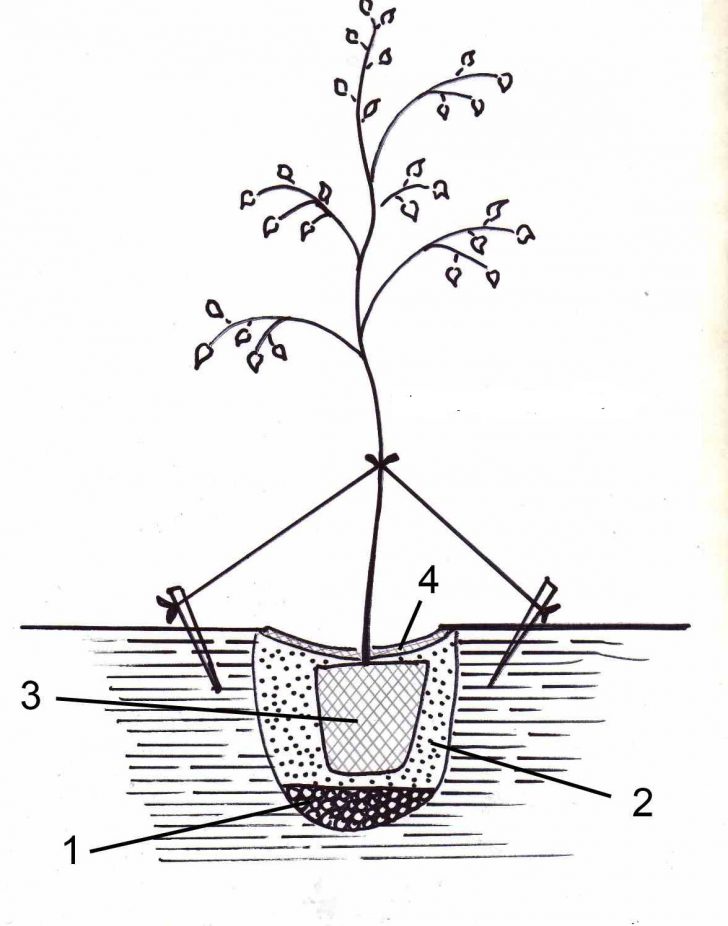
Landing pit for Japanese spiraea
If the soil does not have a high fertility, then when planting it is necessary to add fertilizer with a complex composition to the well. Best suited long-playing AVA-complexes. One tablespoon will be enough to ensure uniform replenishment of bushes over the next three years. Non-chlorinated granules contain the whole set of macro and trace elements, except nitrogen, so it is added to the ground separately. The latter is found in mineral complexes containing urea and in organics (compost, which is made with a 5-7 centimeter layer).

When planting Japanese spiraea, it is recommended to make complex fertilizers
Before the seedling goes into the prepared well, you need to examine its roots. Weak and damaged traces are removed, too long – shortened. Similar actions are performed with the vegetative part of the bush. It can be safely shortened by a third of the length. Especially good this pruning will affect the seedlings with the overdried root system.

Scheme of trimming roots and stems before planting
Before planting such a seedling not bad place not a couple of hours in clean water. The soil around the planting material is compacted. Given the fact that the roots of Japanese spiraea have a superficial location, it is useful for them to loosen and mulch the trunk circles, for which you can use:
1. Peat.
2. Sunflower seeds.
3. Compost.
4. Sawdust.
Mulching will save moisture and protect the root system from freezing.
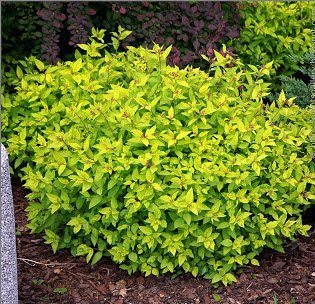
Mulching spiraea with Japanese peat and bark
Care of Japanese spiraeus
Spiraea is a plant from the category of unpretentious, so it will not impose any inflated demands on its content. She will be treated with moderate watering. In the drought the bushes will be content with a couple of buckets of water poured under them every two weeks. Abundant watering will be required only after pruning.
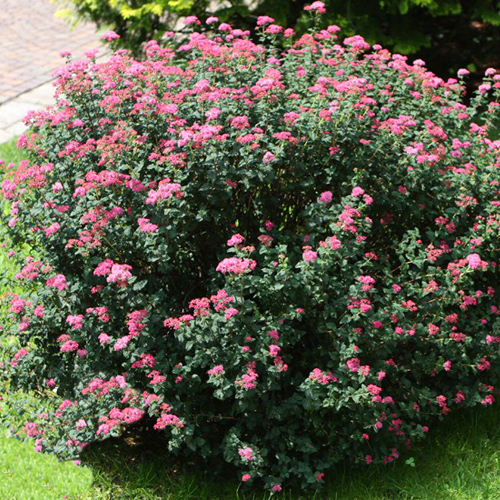
Japanese spiraea does not need frequent watering
What you need to monitor is the state of the near-barrel circle. The soil in this zone should be loose and free from weeds. A good prevention of drying out, clogging and overgrowing with grass will be mulching with compost, bark or peat.
Do you want spirea to blossom for a long time – pamper the plant with liquid top dressing. You can do this for the season twice. The first time fertilizer should be made immediately after the spring pruning, and the second time – in the middle of summer. It is good to use mullein infusion with the addition of superphosphate. 10 grams of fertilizer are placed on 10 liters of infusion. Under each bush need to pour on 3 liters of the finished mixture
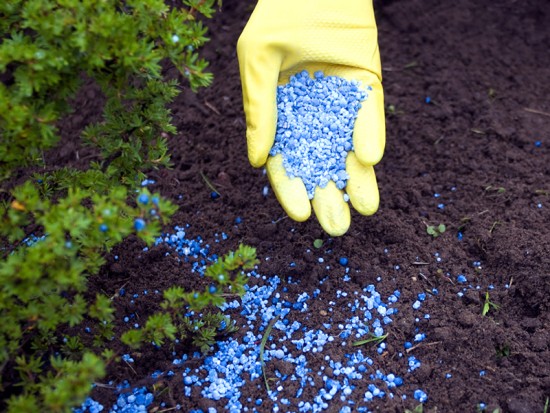
Spraying is done twice a season
We already talked about the spiree’s endurance, but in the snowless and too cold winter it will still have to be taken care of and covered with the roots of the bushes with a layer of foliage of twenty-centimeter thickness.
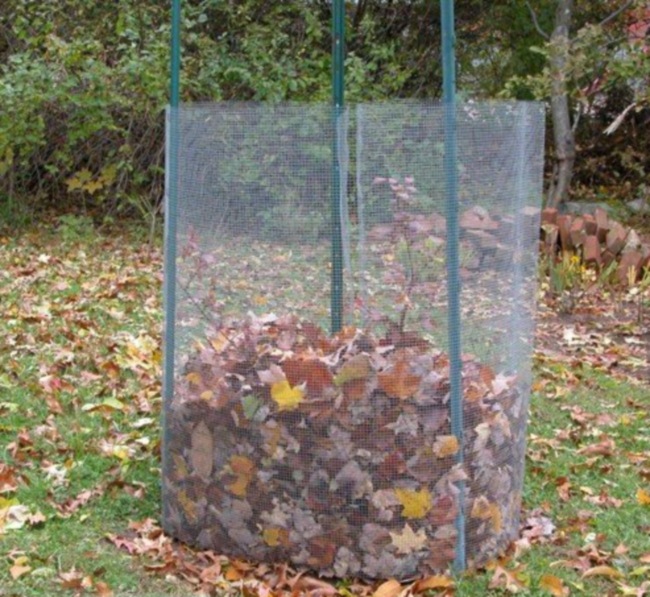
Shelter of spirea foliage for the winter
Experienced gardeners composed a real calendar of care for these magnificent plants, which indicated when and what to do.
Calendar of activities for breeding spiraea and care for her
March, April
Material procurement and landing
If you want to have a hedge of spiree bushes on the plot or just beautiful landscapes with her participation, in March-month you need to puzzle the question and start looking for a quality planting material. First of all you will need to contact a solid nursery and inquire about the availability of the required spiraea varieties of Japanese. To save money, you can buy seedlings with an open root part. For this purpose, the required number of bushes is reserved, a deposit is made and the time for digging out is specified.

Japanese spiraea seedlings
Planting in an open ground spiraeus you will not be earlier than in April. You can start the procedure as soon as the ground dries and you can walk on its surface without falling into the mud. Acquired seedlings can be stored before planting about a week, the main thing is to put them in a shady place, immersing the roots in buckets or putting the bushes in boxes lined with film. Spirea is a very tenacious plant, so it tolerates the change of “place of residence” well. It can be transplanted at almost any time of active life.
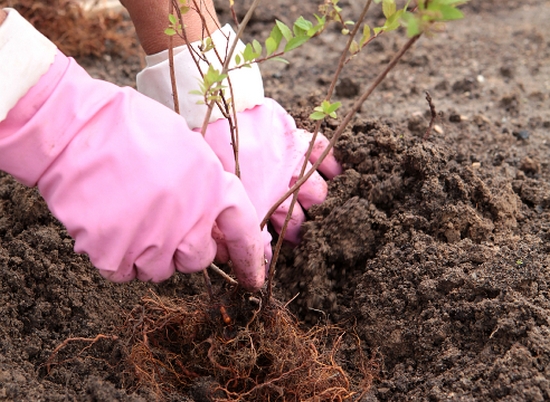
Japanese spiraea seedlings are planted in April
Trimming
Spring is the period of sanitary and rejuvenating trimming of spiraea. Your task is to cut out dry and damaged branches so as not to break the symmetry of the bush. In plants overstepping the 4-year boundary, the oldest shoots are cut to the ground.

Pruning spiraea to form a bush
Multiplication by division
Cool weather is a great time for obtaining additional planting material. In spring, you can dig a young spiraea sprout and divide the bush into several parts.
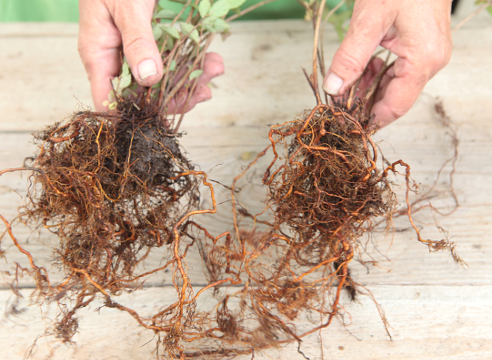
The division of the Japanese spiraea bush
Reproduction by layers
You can go the other way and multiply spiraea with Japanese layers. To do this, annual shoots must be bent and laid in grooves prepared in the ground. To the branch lay, as conceived, it is pinned along the entire length and sprinkled with a layer of soil. During the coming season, you will receive from it several new bushes.
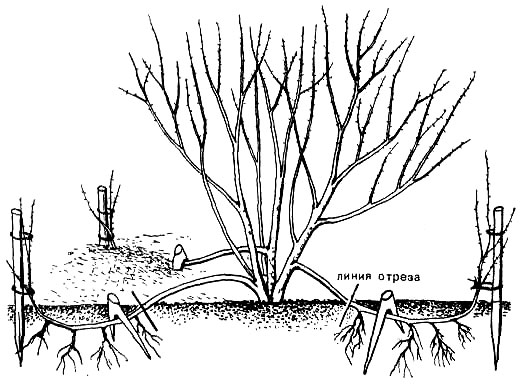
The principle of reproduction of a bush by layers
May June
Purchase and planting of seedlings
In May an active trade in seedlings of spiraea begins in containers. They can be planted on the site throughout the season, however, it is better not to procrastinate in purchasing the vintage varieties, since the most attractive subspecies are very quickly disassembled.
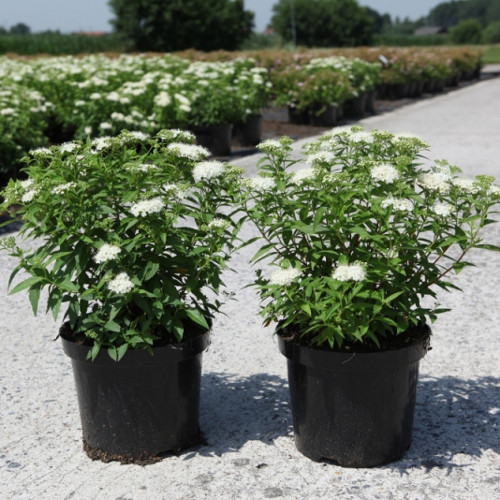
Spiraea seedlings in containers
Do not be discouraged if you suddenly got a “jaded” seedling, with roots “cemented” in a dry earthy coma. Spirea is very stress-resistant and the bush can really be brought back to life. This is done so. A few hours before the proposed landing, the root part is lowered into the water. After the time the bush is removed and a few vertical incisions are made along the lateral part of the coma, deliberately trying to slightly damage the roots. This method will stimulate their growth and development. After the procedure, the clod is dusted with the rootstock and the seedling is sent to the ground.
July
Time of stimulation
If you want to extend the period of abundant flowering, you need to take a pruner and cut off the tops of already faded shoots.
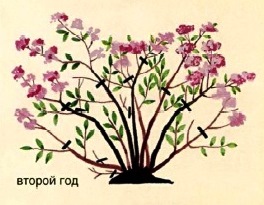
Pruning of faded inflorescences will prolong flowering
We fight with reversible shoots
Yellow-leafed spirits of Goldflame and Golden Princess are often sprouted with standard green foliage. They should be cut to the ground immediately after detection.
Aug. Sept
Re-trimming
It is carried out after the full flowering of the bush. The ends of color shoots are removed. It is more convenient to do this with garden scissors, rather than a secateurs. So the business will move much faster. Timely pruning will prevent self-seeding. It will allow more compactly to form the crown of the bush, in addition, it will save you from contemplation of dried out fruit, although in winter they will be a real decoration of the landscape. Here, decide for yourself how justified pruning or conservation of fruits. Shoots are shortened to the first large kidneys.
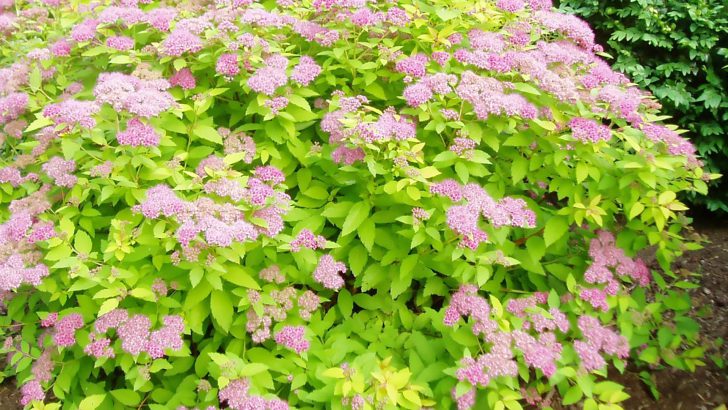
It is very important to make timely pruning of spiroea
When rejuvenating pruning, do not be afraid to cut something extra. Radical pruning is the key to the birth of new strong young shoots. To miss it is fraught. Without this procedure, old shoots deform the crown of the bush, bending the branches to the ground, and the tips of the shoots will dry up. Not only will the aesthetics be lost – the plant can disappear altogether.
October
Sowing time
This month, the Japanese spiraea seeds are harvested, which will be sown under the winter.
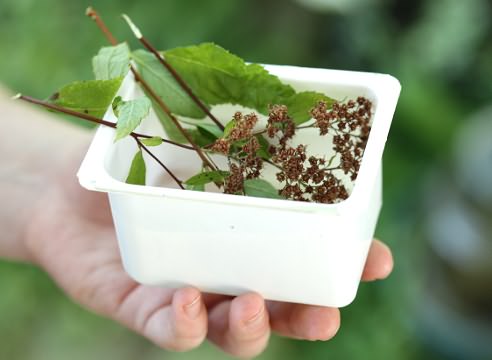
Procurement of Japanese spiraea seeds
What are plants afraid of?
Spirea in general is rarely sick, but from pest attack is not insured, like any other green plantation. The bushes most actively attack:
1. Aphids.
2. Spider mite.
3. Leaflet.
The latter appears already in May. Its caterpillars are so voracious that they can destroy up to 60% of the crown, gnawing juicy leaves along with pedicels. The leafworm can be treated with Primor in 0.1% concentration. Its use in 95% of cases helps to get rid of pests for one spraying.
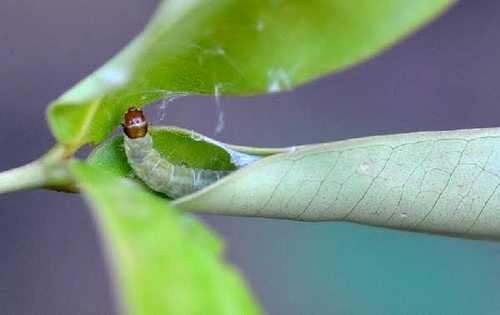
The leaflet on the leaves of Japanese spiraea
The most dangerous enemy spirea is a spider mite. About its appearance indicates a light web in the crown and holes in the inflorescences. The leaves of the affected plant will dry and fall without cause. The most active parasite in the drought period. Effective against the spider mite can be: 0.15% solution of phosphamide, 0.2% solution of acrex or old good carbophosum in 0.3% concentration.
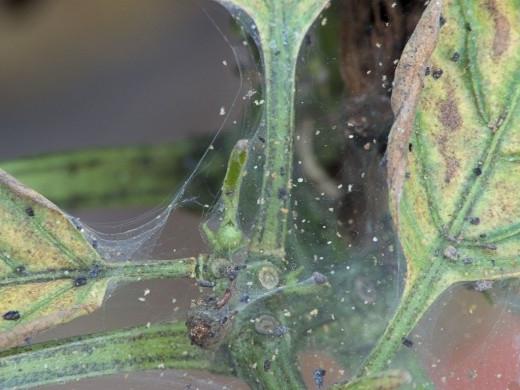
Spiraea Japanese affected by a spider mite
Preventive measures to prevent pest attack – this is regular loosening of the soil, proper watering, timely feeding.
Spirea in the garden landscape
Japanese spirea with its species diversity and unusual beauty of bushes is an indispensable element of garden decor. In addition to being stunningly aesthetic, it is also loyal to the juvenile plants. Spiree bushes easily tolerate even the most merciless pruning, so that they can be given the most unconventional forms. Spirea is always gorgeous and looks great not only in small gardens, but also in huge parks.
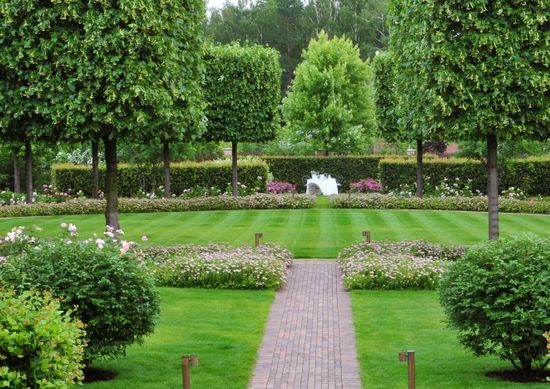
Spirea also looks great in large parks
The bushes become a luxurious addition to the compositions from the stunted trees. They, being strewn with delicate flowers, effectively look separately standing on a green lawn. No less interesting are the bushes in the stony garden, planted among tui, cypress, junipers and dwarf fir trees.
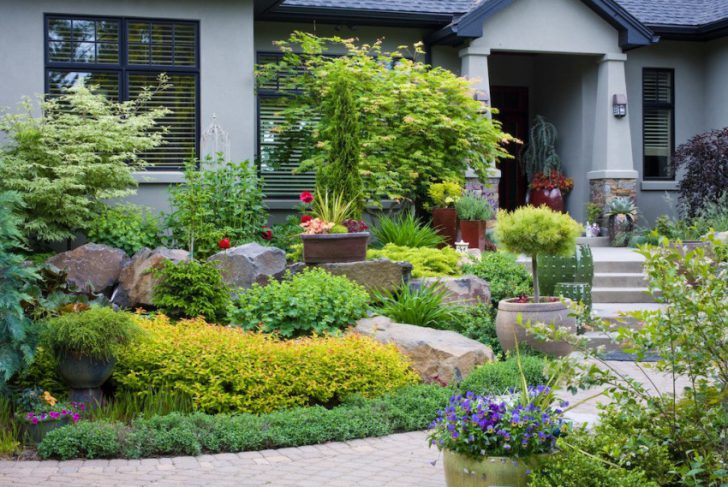
Japanese spire in a rocky garden
Spirea serves as an excellent “podbivkoy” larger congeners:
1. The Kalina.
2. Chubushnik.
3. Lilacs.
4. Rhododendron.
Low-spirals species of spiraea are often inhabited by rockeries.

Dwarf Japanese spirea in rockary
Designers like to use spirea as a material for creating hedges. Its seedlings are affordable, and the fence of them is easy to cut in the right shape. Frequent pruning deprives shrubs of the ability to blossom, but this unfortunate flaw is more than offset by the beauty and singularity of the foliage’s color solution.
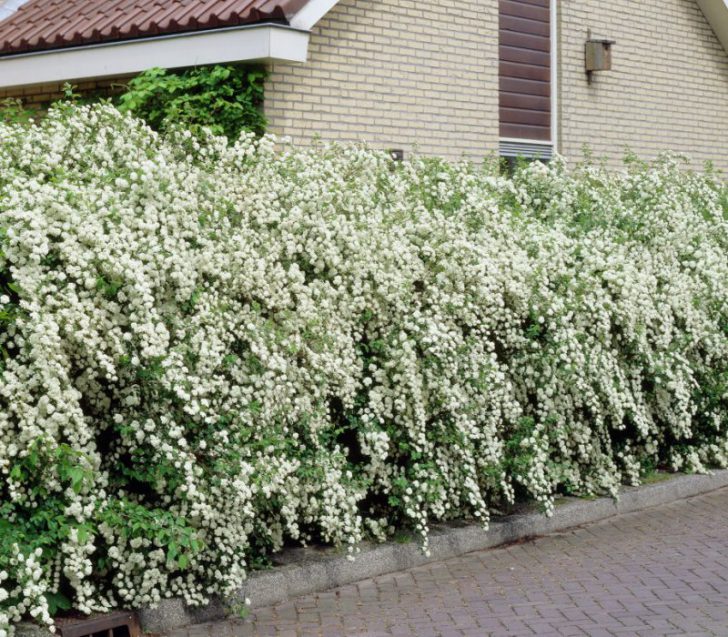
Living hedge from spiraea
With whom is spiraea “friends”?
“The use of Japanese spiraea with unique decorative foliage will make decorative compositions attractive until late autumn”
Spiraea in color are unique. From their bushes, blooming in different periods, you can create real landscape paintings. Using Japanese spiraea with unique decorative foliage will make decorative compositions attractive until the very late autumn. Very impressive are her large-scale group plantings in a complex with lilac and chubushnik bushes, primaries, curbs, bulbous lilies of the valley, astilbe. Decorability of this composition is guaranteed from early spring to the last warm days.
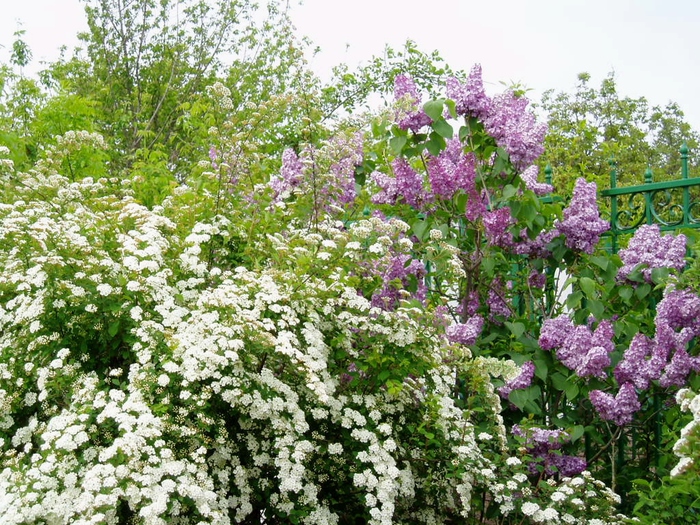
The combination of spiraea and sulfur
In the trunk circles of a lonely standing spiraeus, carpets woven from ground cover perennials will be appropriate:
1. Brilliant dark green vinca.
2. Dazzling yellow paints of saxifrage shadow.
3. The variegated lungwort.
4. Painted windmills.
5. Mouse gray cerastrum.
A successful solution will be to complement the composition with spring soloists – bulbous and small-bellied flowers such as multicolor daffodils, tulips, hazel grouses, blue streams of scylla, purple glades of hondoksy, sirenovato-pink criminals and piercingly blue circles of muscari.

A flower garden of tulips and spirea golden princesses.
A win-win course will be the landing in front of the bush spirets of perennial violas and violets blossoming to the very snows.
Conclusion
If Japanese spiraea is not already present on your site, then do not apply to acquire it in the next season. As you can see, the plant practically does not need your attention and care, but for those parts of it that you give to it, it is ready to thank generously with the luxuriant scattering of elegant flower buds.
Photo Gallery – Japanese spiraea
Video
Author: Mikhail Bond

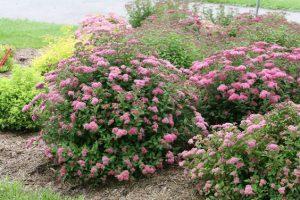
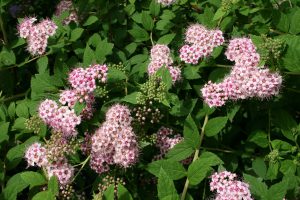
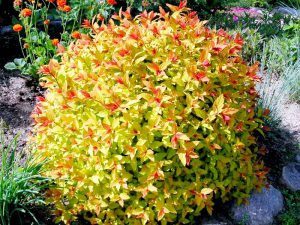
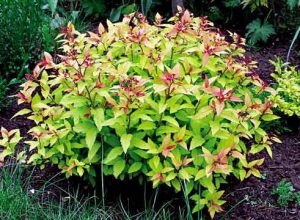

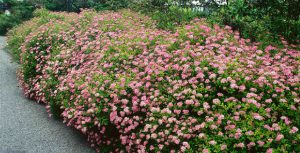
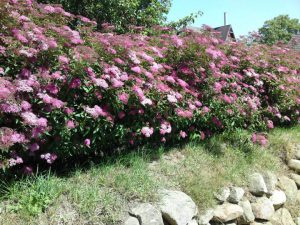

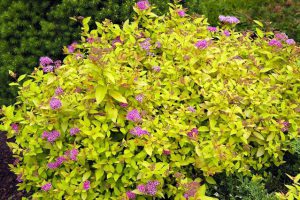
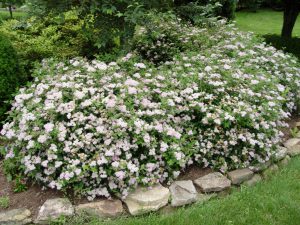
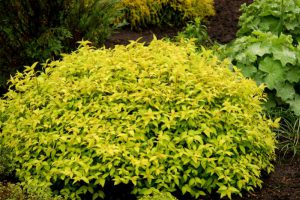
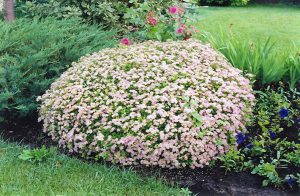
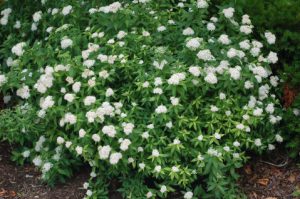

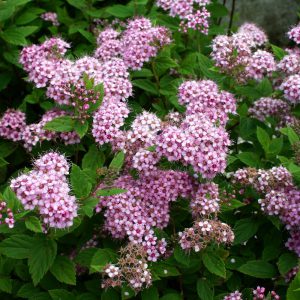
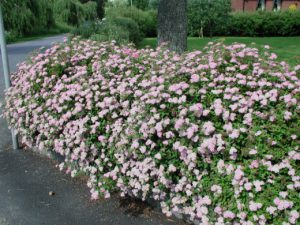
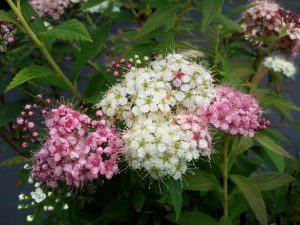
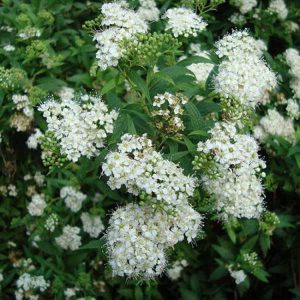
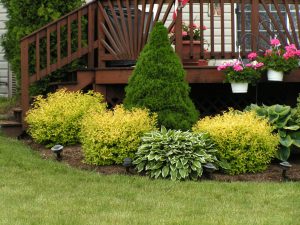
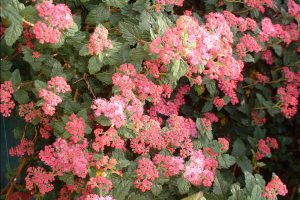
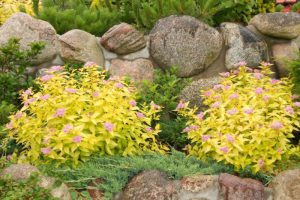
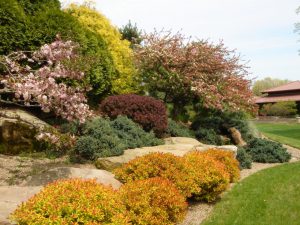

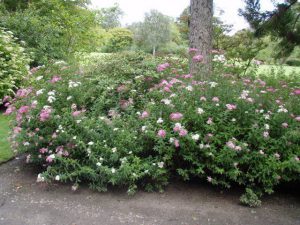
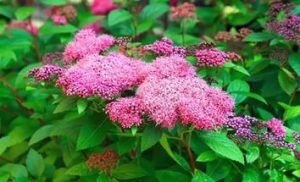
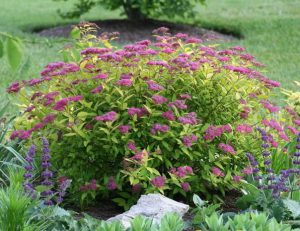
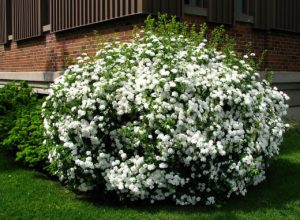
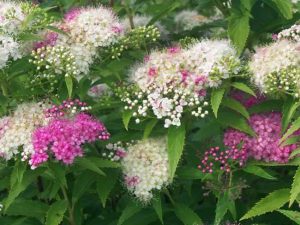
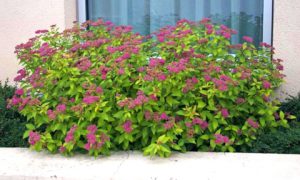
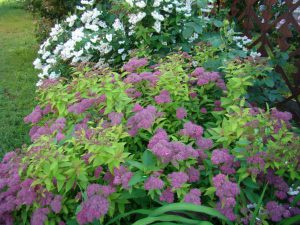

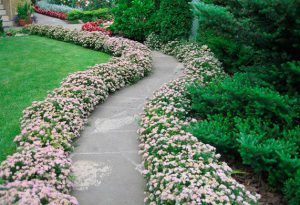
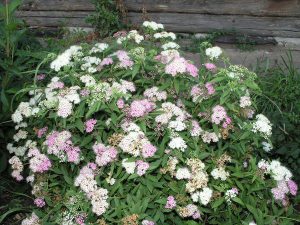
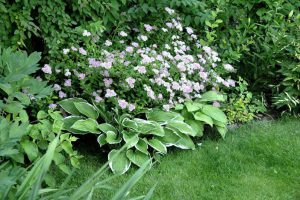

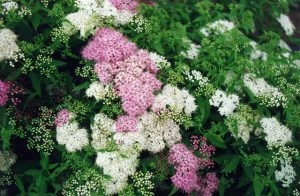
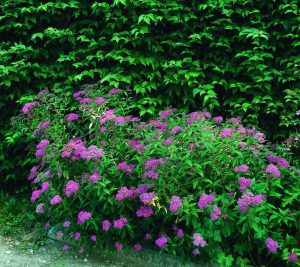

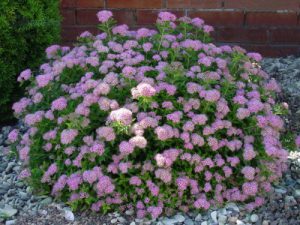
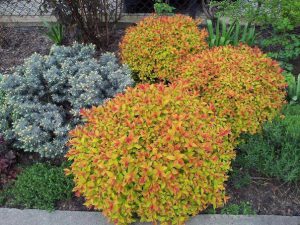
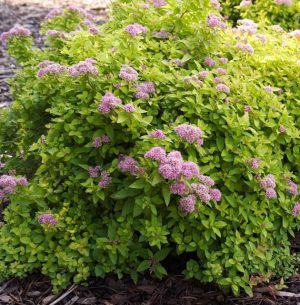
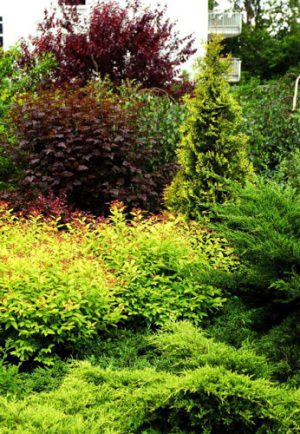
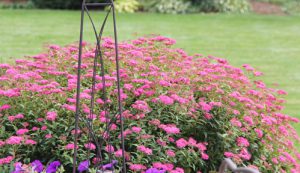
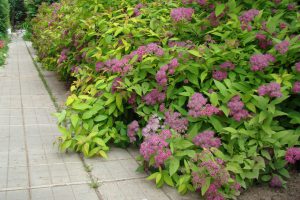

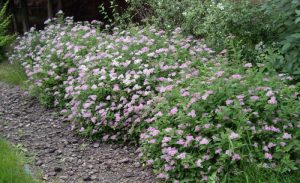
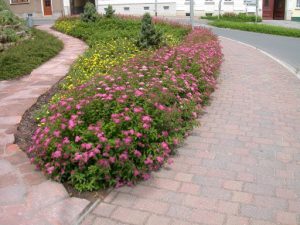
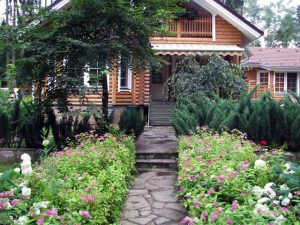

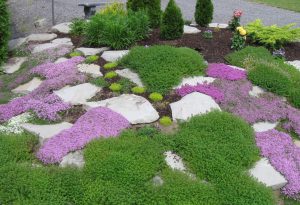
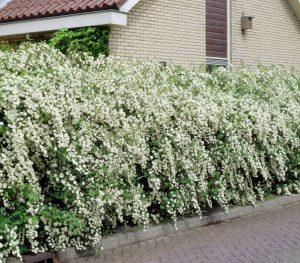
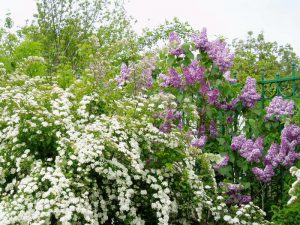
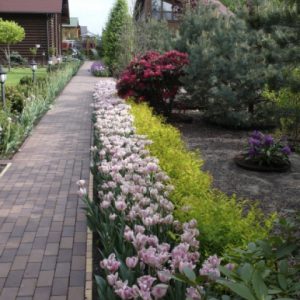
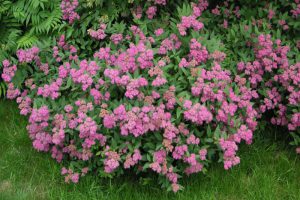
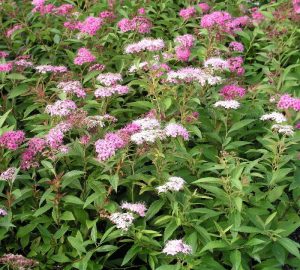
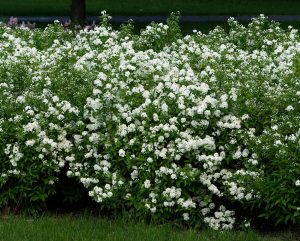
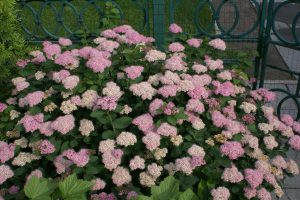


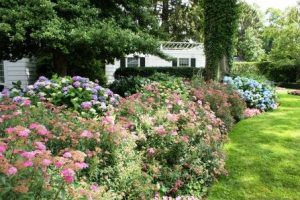
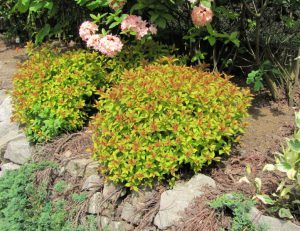
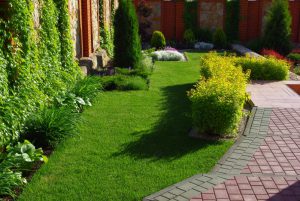
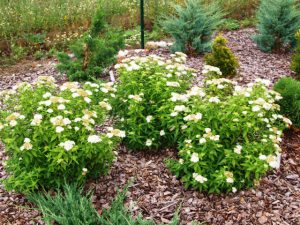

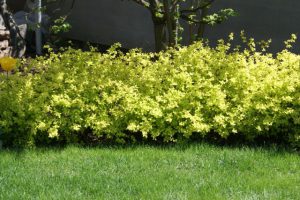
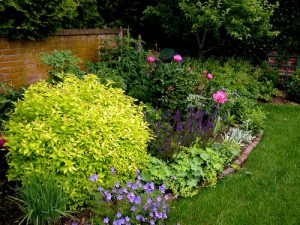
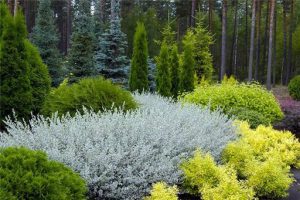
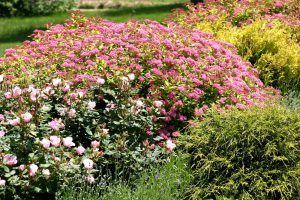
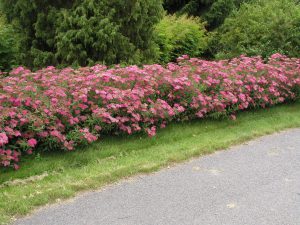
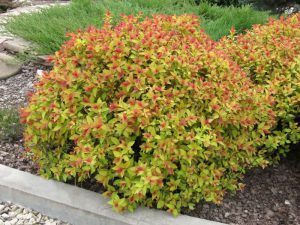
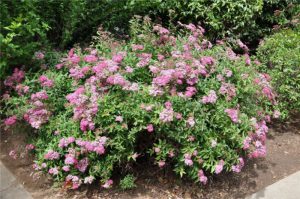

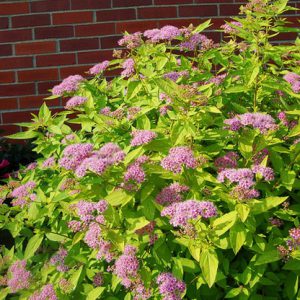
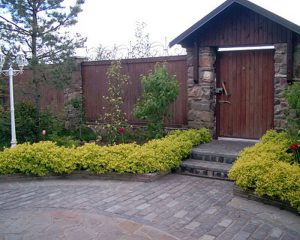

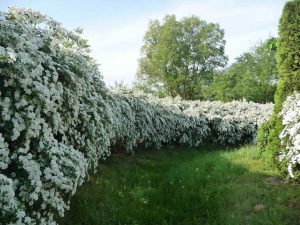

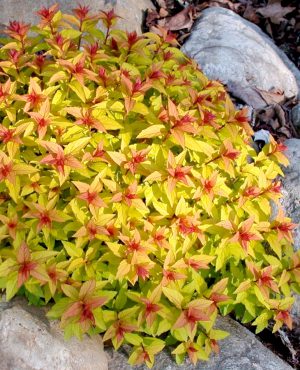
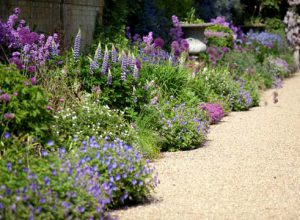
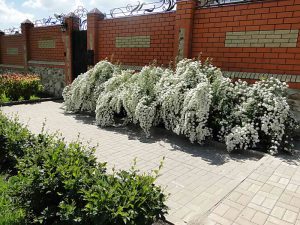
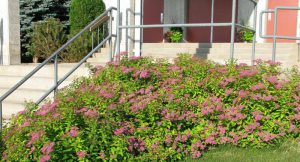

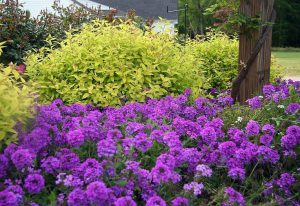
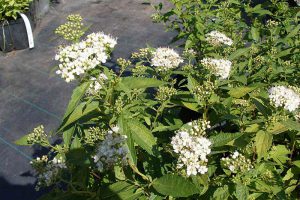
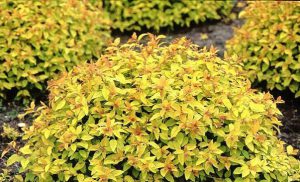
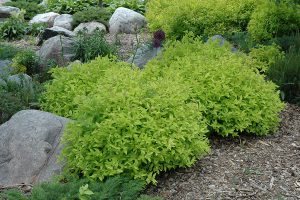

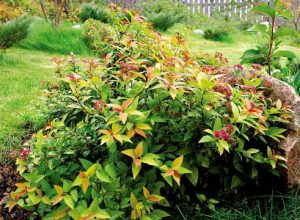
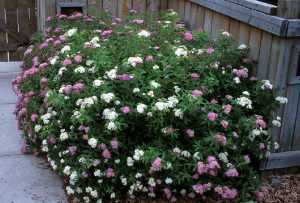
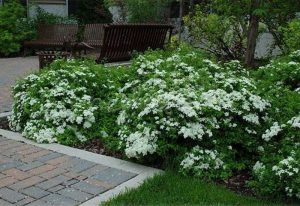
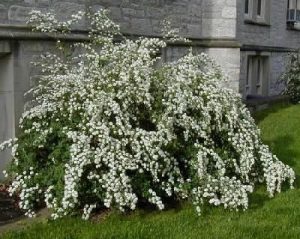
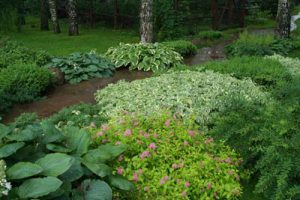
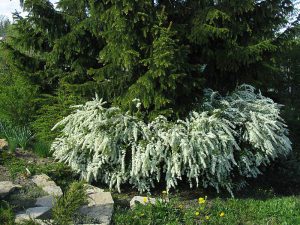

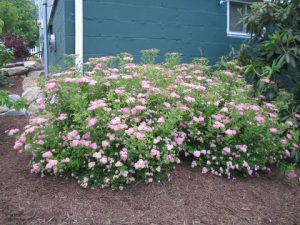



05.05.2023 @ 17:45
ea Japanese Crispa adds elegance to any landscape design with its unique foliage and delicate flowers. Its low height and globular crown make it perfect for curbs and rock gardens. The wavy serrated leaves add texture and interest to the plant, while the pinkish-lilac flowers add a touch of color. Overall, Japanese spiraea is a versatile and durable plant that can add beauty to any garden or landscape.